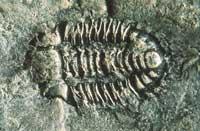Trilobites, correspondents of the Cantabrian Age
In the Cantabrian Age evolution advanced a lot, but scientists do not know why. According to a hypothesis, the rupture of a continent favored the rapid proliferation of species. However, they have now seen that, according to a study of the trilobites fossils, this continent did not break so fast, and those changes occurred more slowly than expected.

According to the previous hypothesis, the continent of Pannotia, once broken, isolated the populations and created new ecosystems, giving rise to favorable conditions for the creation of new species. The fragments moved from the south pole to the equator, supposedly very fast, much faster than the movement of the present continents.
However, the analysis of trilobites fossils does not confirm this. More than a hundred species of trilobites have been analyzed and, given its diversity, it seems that the continent of Pannotia broke before the expected. This means that it spent much longer on the way to the equator and that the appearance of the species was much slower than expected.
In this case, the analysis of trilobites has been very useful due to the world scarcity of suitable stones to analyze this time.
Buletina
Bidali zure helbide elektronikoa eta jaso asteroko buletina zure sarrera-ontzian











